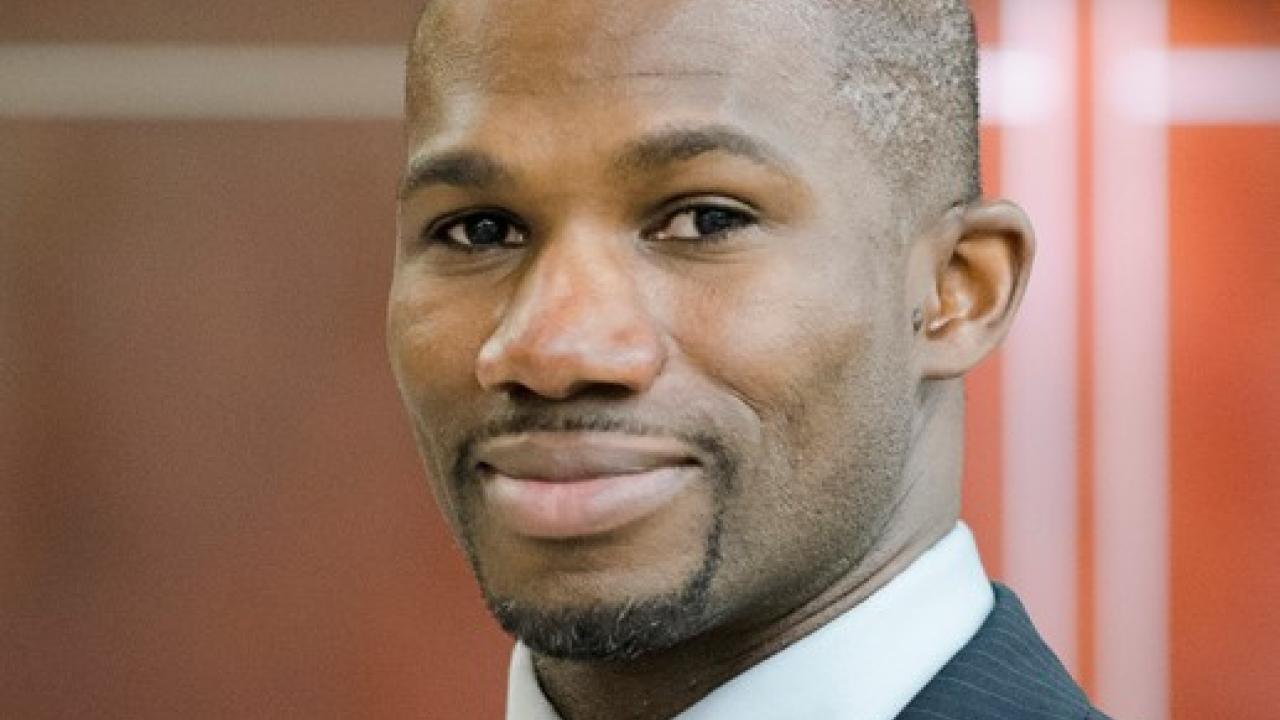
Event Date
A recording of this presentation is available to UC Davis affiliates at this link.
A. BOLU AJIBOYE, PH.D.
Elmer Lincoln Lindseth Associate Professor of Biomedical Engineering
Laboratory for Intelligent Machine-Brain Systems, Case Western Reserve University
Functional Electrical Stimulation Center (FESC), Louis Stokes Cleveland VA Medical Center
Host: Wilsaan Joiner, PhD, wmjoiner@ucdavis.edu
This is an in-person event. Please register here: https://tinyurl.com/Neuroeng-Dec23
Registration for remote attendance is limited to colleagues from the Sacramento campus and those working remotely: https://tinyurl.com/NeuroengDec23
Abstract
“REconnecting the Hand and Arm to the Brain (ReHAB): Bi-directional neuroprostheses for sensorimotor functional restoration”
Cortically controlled neuroprostheses have long been posited as the “holy grail” for intracortical brain-machine interfaces (BMIs). The efficacy of BMIs has advanced to the point where a small number of laboratories around the US now run human clinical trials with people with chronic paralysis. As part of the ReHAB Clinical Trial, my Laboratory for Intelligent Machine-Brain Systems (LIMBS) investigates using BMIs to control Functional Electrical Stimulation (FES) systems for restoring reach-to-grasp movements to persons with chronic high cervical spinal cord injury. This lecture will discuss several of our clinical, technological, and scientific advances towards developing a bi-directional BMI controlled FES arm neuroprosthesis for restoring motor and somatosensory function. The highlight of this lecture will be the demonstration of a current ReHAB participant, an individual with chronic tetraplegia, eight years post-injury using a multi-nodal BMI with multi-contact FES nerve cuff electrodes to volitionally and independently perform functional tasks, such as self-feeding and shaking hands, and discerning somatosensory feedback through intracortical microstimulation (ICMS). This lecture will also discuss use of human BMI systems as a platform for interrogating fundamental questions of human sensorimotor control, including understanding underlying mechanisms of motor performance and learning, and internal representations of kinetic, kinematic, and somatosensory parameters. Finally, this lecture will discuss steps towards clinical translation of viable FES+BMI neuroprosthetic systems for potential at-home use.
Bio
A. Bolu Ajiboye, PhD is the Elmer Lincoln Lindseth Associate Professor of Biomedical Engineering at Case Western Reserve University. He also holds an appointment as a Biomedical Engineering Scientist at the Louis Stokes Cleveland VA Medical Center. He received his dual BS degree in Biomedical and Electrical Engineering, as well as a minor in Computer Science, from Duke University (Durham, NC) in 2000. He then received his Masters (2003) and Doctoral (2008) degrees from Northwestern University (Evanston, IL). Dr. Ajiboye is the director of the Laboratory for Intelligent Machine-Brain Systems (LIMBS), where his main research interest is in the development and control of bi-directional brain-machine interface (BMI) neuroprosthetic technologies for restoring motor and sensory function to individuals who have experienced severely debilitating injuries to the nervous system, such as spinal cord injury and stroke. Currently, he is interested in understanding at a systems level the relationships between the firing patterns of multi-neuronal networks and the kinetic (muscle activity and force) and kinematic (limb position and velocity) outputs of these neural systems in the control of upper-limb movements, as well as encoding models of somatosensory percepts for sensory restoration. The end goal of his research is to develop BMI systems that allow for more natural interactions with one’s surrounding environment, and more natural control of assistive technologies, such as artificial limbs and functional electrical stimulation (FES) based systems. Additionally, his research focuses on understanding natural muscle coordination patterns involved in motor coordination, and how these patterns can be used in neuroprosthetic systems to restore lost or compromised function through FES.
